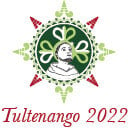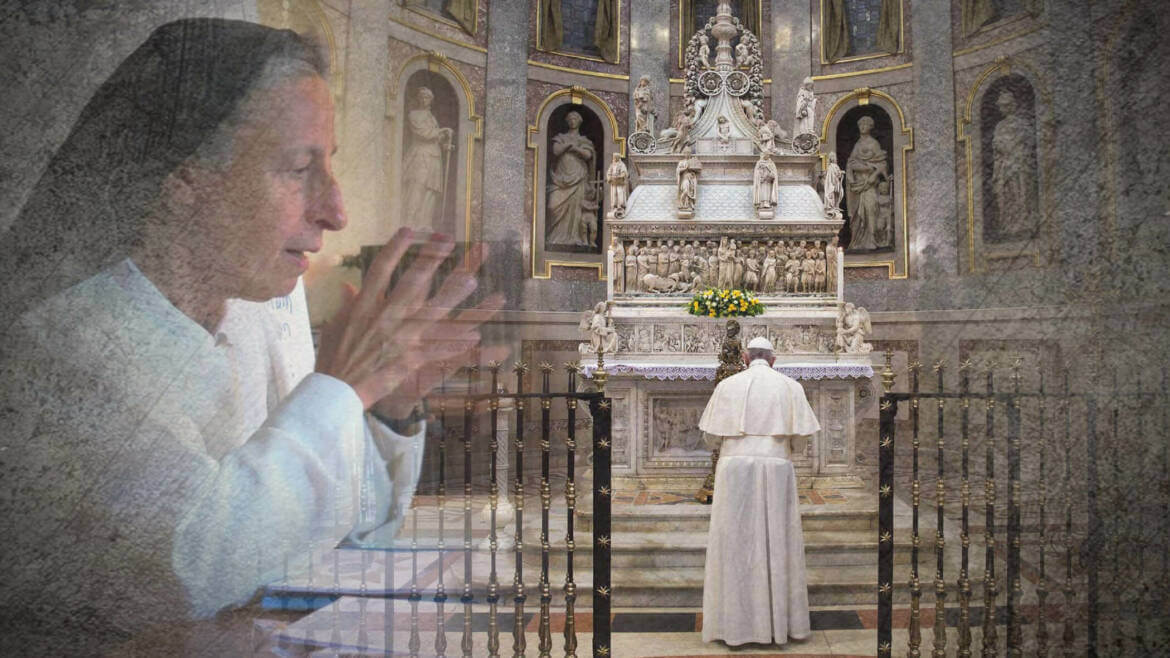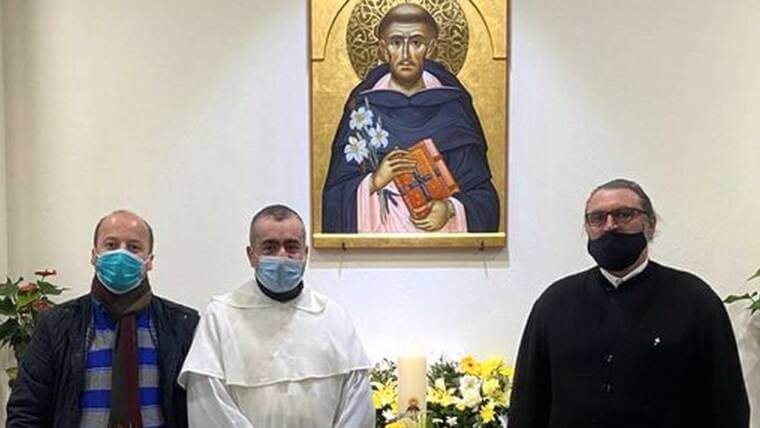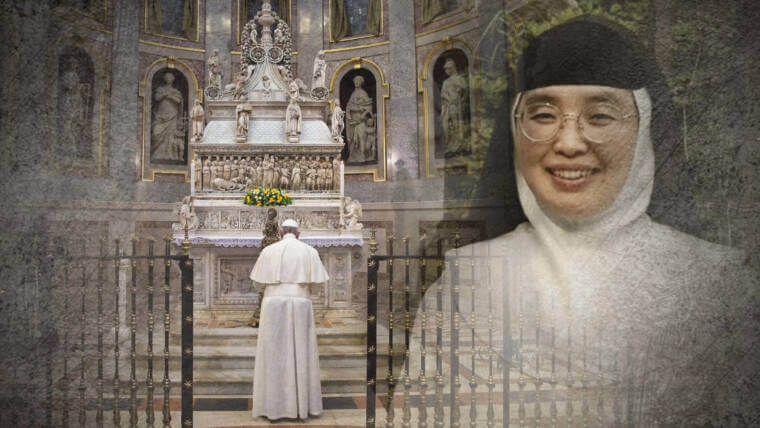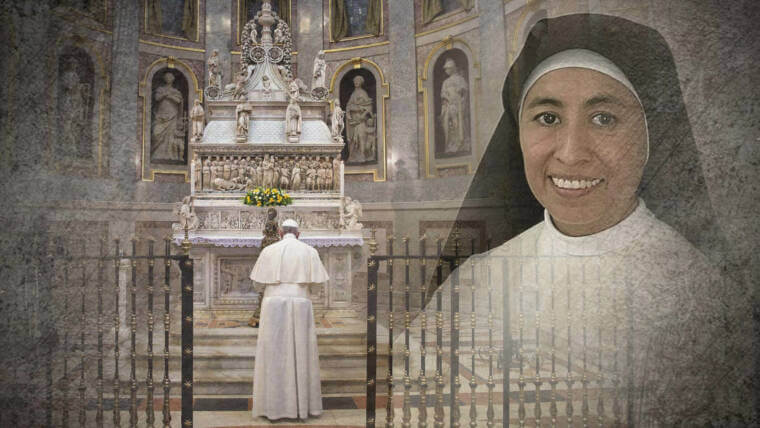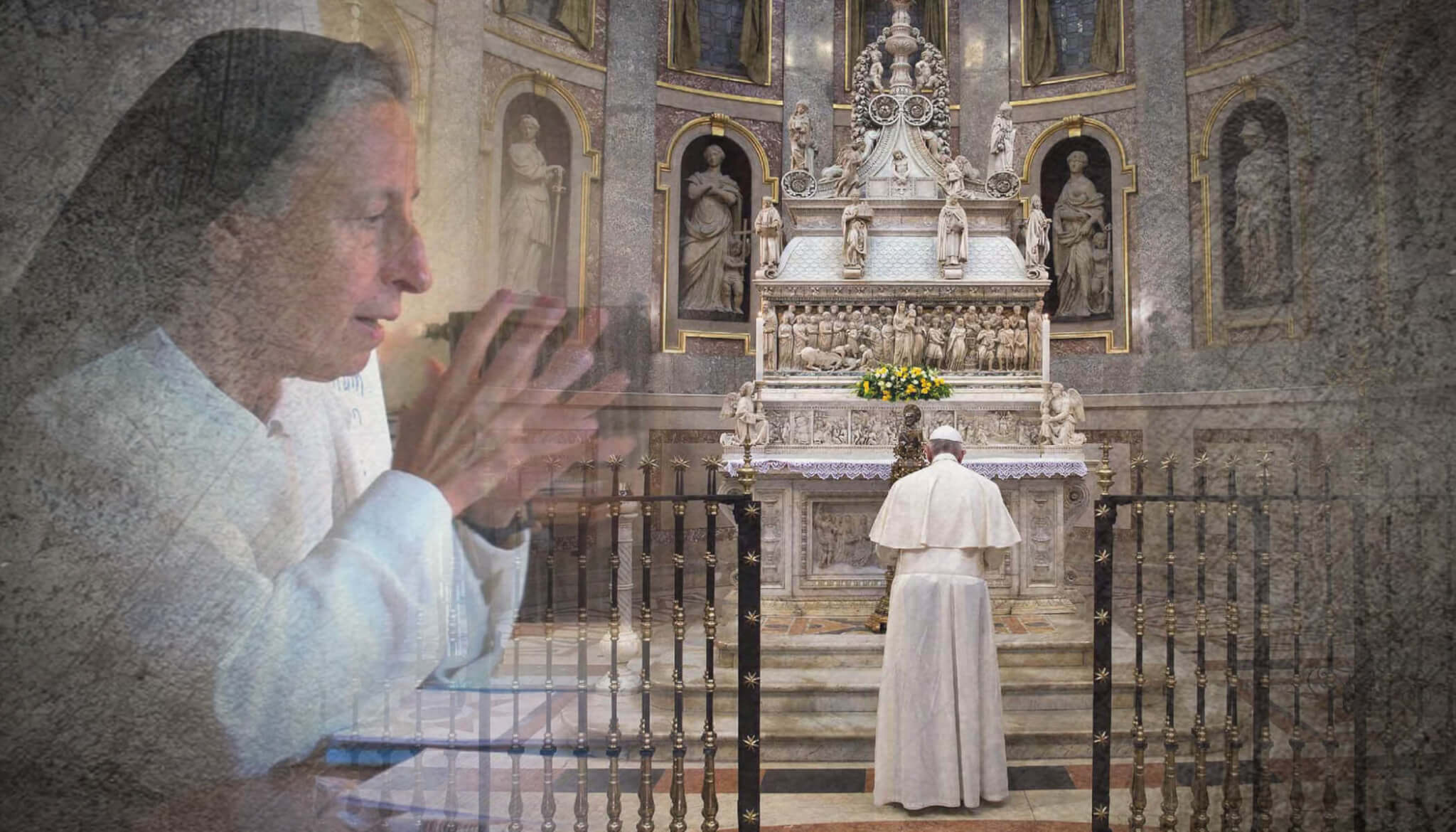
It is eight hundred years since St. Dominic died! This is an occasion for the Church to “give thanks for the spiritual fruitfulness of that charism and mission, seen in the rich variety of the Dominican family” (PG 1). As Georges Bernanos wrote in the last century, Dominic’s face is now merged with that of his Order: “If it were in our power to look at the works of God with a single, pure gaze, the Order of Preachers would appear to us as the very charity of Saint Dominic fulfilled in space and time, as his visible prayer.” If there are many charisms in the Church at any time, rarely are they still at work several centuries later. Where does this fruitfulness come from?
What is striking about Dominic is that he was perfectly attuned to “the urgent need of his time” (PG 2). Now, as Pope Francis points out, this need was twofold. There was the need for a new evangelization, to which St. Dominic responded with poor, itinerant preaching; but there was, “equally important, […] a summons to holiness in the living communion of the Church” (PG 2). And Dominic understood at once that without a lived holiness, his own and that of his communities, preaching would sooner or later be doomed to failure, that without this resolute return to the way of life of the first Christian community, the word of the Gospel would be lost in the hubbub of the din of the times.
There is a very profound, original reading of what it means to be contemporary with one’s time. The philosopher G. Agamben has stated the following thesis: “The contemporary person is the one who receives in his face the beam of darkness that is a product of his time”. And this is what happened to Dominic during the famine in Palencia, when, moved by compassion in the face of so much distress, “he sold his precious books and established a centre for almsgiving”, and again decisively way when he discovered the great poverty of the heresy in the Languedoc. But, Agamben continues, this is not enough: authentic contemporaneity requires more, it must be capable of “perceiving in the darkness of the present that light which seeks to reach us and cannot do so”, and he adds: “this is why contemporary people are rare.” For Dominic, this light could only be the light of the Gospel, which it was necessary to have the courage to make shine verbis et exemplo in its original purity beyond all that covered it in the discourses and mores of the time; and the courage of the Gospel is nothing but holiness. Far from isolating him and distancing him from his time, holiness was therefore that source of light which, drawn from God, was to maintain and support his response as a preacher of grace in the darkness of time.
This is why “each saint is a mission, planned by the Father to reflect and embody, at a specific moment in history, a certain aspect of the Gospel” (GE n°19). If the emergence of a charism is always dated and circumstantial, when it is borne by holiness, it is clothed with the power of divine life which knows no end; then it can last and bear fruit. This is “the perennial timeliness of St. Dominic’s vision and charism” (PG 3), and not in a purely temporal sense, but in the metaphysical sense of an actualitas that refers to the capacity to operate and to “intercede” effectively in the passing of ordinary time. And since the charism of the saint has its source in God, it is also given to the whole Church as its own good and as such can “serve as an inspiration to all the baptised” (PG 3).
“Dominic’s great calling was to preach the Gospel of God’s merciful love in all its saving truth and redemptive power” (PG 4). Surprisingly, Fra Angelico almost always chooses to represent Dominic the preacher in silence at the foot of the Cross, under the radiance of the mercy of God. There he discovered that he is the recipient of the crucified Love that he believed and knew is destined for all. One and the same experience made him experience his own salvation and the universal brotherhood of the poverty of sin and the limitlessness of Mercy. That this salvific encounter might be lacking became anguish for him. So he begged and cried out, as if to tear open the abyss and open a way out for Mercy. The more he received it, the more he perceived its universal invitation, and the more he allowed himself to be configured to it, the more his “frequent and special prayer … for the gift of true charity capable of labouring for and procuring the salvation of souls” (Libellus, 13) sprang forth. Fra Angelico understood this: at the foot of the Cross, the call to holiness and the call to mission are one and the same for Dominic.
In this way, two important features of the Dominican charism become clear. First of all, the preaching of grace is not only a matter of discourse and doctrinal content, but it aspires to launch itself as the word event that can give the recipient the fire of an intimate encounter with the Saviour, a dazzling outcome in which the word can become effective, performative, capable of “warm[ing] hearts” (PG 2), of “awaken[ing] in them the thirst for the coming of Christ’s kingdom…”. (PG 5) Secondly, his insistence on thinking of himself as Brother Dominic stems from the urgency of communion that he drew from divine mercy: there, every human brother, friend and enemy alike, was elevated to the rank of a true intimate friendfor God by the death of his Beloved Son on the cross.
To remember Saint Dominic, who wanted to be a friar, at a time when Pope Francis has just offered the world the encyclical Fratelli tutti – is it not a wink from Providence? In any case, three types of commitment are proposed here to the Order, like so many concentric circles.
First of all, there is the request to “cooperate in every effort to give birth to a new world, all of us are brothers and sisters… (Fratelli Tutti, 278) “. (PG 5) It is an invitation to walk resolutely along the path opened up by Gaudium et Spes: Christians have the right and the duty to make their contribution to the construction of a more fraternal world without fearing to take up challenges that may unnerve them at first. It is true that most of our contemporaries do not share, and often even reject, the face of God which is at the base of Christian fraternity. But this refusal cannot de-legitimise the commitment to work alongside them. It is a question of belonging to Christ and of God’s wish that no one be lost. What is at stake for the Order is Dominic’s compassion in the face of all distress.
The second request sounds like the Church’s renewal of the preaching mandate: “May the Order of Preachers, now as then, be in the forefront of a renewed proclamation of the Gospel, one that can speak to the hearts of the men and women of our time and awaken in them a thirst for the coming of Christ’s kingdom of holiness, justice and peace!” (PG 5). This means that the Church still needs preachers of grace in order to “reawaken the spiritual energy” (FT 276) that will make fruitful the commitments at the heart of the Church as well as on its margins.
But the most precious contribution of the Order to universal fraternity comes quite simply from the “common life” that Dominic desired, instituted and lived. It is not that the common life fully accomplishes fraternity, but it puts it into action with the effective tools of sharing goods, living together, service, hospitality, etc. It is a promising laboratory. The genius of St. Dominic was to infuse the ideal into government, by choosing an “inclusive form of governance in which all shared in the process of discernment and decision-making” (PG 6). It is therefore possible to move away from the logic of violence and competition, it is possible and good to live together, and, nourished by the Eucharist and the word of God, to open up to a more mysterious reality, that of unity in God through the building up of the Body of Christ. For this reason, common life, more than anything else, has the value of “prophetic testimony to God’s ultimate plan in Christ for the unity and reconciliation of the entire human family”, and as such constitutes a “fundamental element” of the charism. (PG 6)
When Pope Francis finally speaks of the fruits of holiness and sometimes of genius that the great centuries-old tree of the Dominican family has borne (PG 7), he underlines “the outstanding contribution they have made to the preaching of the Gospel through the theological exploration of the mysteries of the faith. “(PG 8) It is so true that, historically, the Dominican is commonly regarded as an intellectual!
But the initiative goes back to the saint himself: “By sending the first friars to the emerging universities in Europe, Dominic acknowledged the vital importance of providing future preachers, with a sound and solid theological formation…” (PG 8). In this he differed very markedly from St. Francis who was always suspicious of a “knowledge that puffs up” (1 Cor 8:1). “Study” was for St. Dominic such a fundamental element of Dominican identity that he prescribed it from the outset even to the nuns he gathered in Rome (Early Constitutions of St. Sixtus). But he always combined it with poverty and common life. Poor because it does not seek to make a career but puts itself “in the service of God’s revelation in Christ” (PG 8). Poor above all in its effort to strip the mind of the idols that are the false conceptions of God or of man, in its begging for a ray of evangelical light on the realities it scrutinises, and in the end in a radical nakedness in the face of the ever greater mystery of God. As for fraternity, it constitutes both the breeding ground and one of its aims: trusting in human intelligence, it equips it solidly for questioning, dialogue and debate. In a world of violence, this recourse to reason and dialogue will always be the first step towards respect for the other. Therefore, to study is also to “love with all one’s ability to understand”, as a nun once said.
At the crossroads of faith and reason, of contemplation and missionary impetus, study sheds light particularly on a rhythm, a typically Dominican “cadence”, which consists in setting in tension poles which, without being contradictory, are nevertheless opposed, and which require both a coming and going from one to the other – this is Dominic consecrating his days to his neighbour and his nights to God – and a mutual interpenetration, since in God’s plan they are conjoined – this is Dominic who learned at an early age “to appreciate the inseparability of faith and charity, truth and love, integrity and compassion”. (PG 4) This unresolved tension can be derived from the Lord’s order to the apostles: “not to belong to the world” while being “sent into the world”. For the apostle, it describes a paradoxical condition in which s/he cannot totally agree with any of the operations that take place in the world, though without being absent from it, but working to keep together realities that in the order of the world seem to exclude each other. This life of tension, which was Dominic’s, is thus like the projection into finite existence of the infinity of the divine life where opposites come together.
Let us dare to go further and formulate the hypothesis that the maintenance of this tension is a guarantee of fruitfulness, while its relaxation through the loss of one of its poles is a sign of the diversion of the charism. To take the example of theology, it is when the concern for truth is combined with that of concrete, effective charity that the Order has written the most beautiful pages of its history: “The unity of truth and charity found perhaps its finest expression in the Dominican school of Salamanca, and particularly in the work of Friar Francisco de Vitoria, who proposed a framework of international law grounded in universal human rights. This in turn provided the philosophical and theological foundation for the heroic efforts of Friars Antonio Montesinos and Bartolome de Las Casas in the Americas, and Domingo de Salazar in Asia to defend the dignity and rights of the native peoples.” (PG 4) On the other hand, if truth were to be disqualified in favour of religious observance alone, or if the defence of truth were to set aside the primacy of charity, then a darker page would be written than during the excesses of the Inquisition.
As for the space that is wide open between the poles in tension, it gives rise to expressions and initiatives that are as multiple as they are varied. “The religion of my son Dominic is a delightful garden, immense, joyful and fragrant”, said Our Lord one day to Saint Catherine, who reported it.
Sr. Marie Trainar, O.P.
Monastery of Langeac
France

